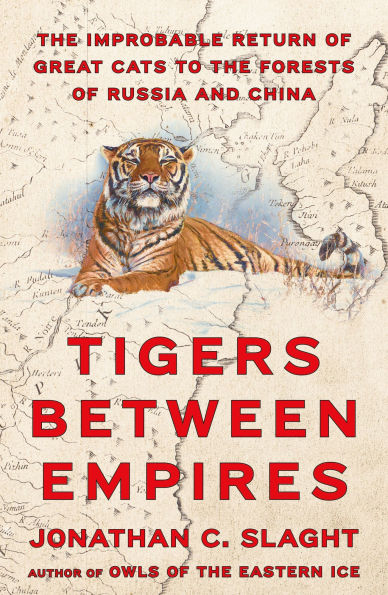The forests of Northeast Asia are home to a marvelous range of animals—fish owls and brown bears, musk deer and moose, wolves and raccoon dogs, and leopards and tigers. But in the final years of the Cold War, only a few hundred tigers stepped quietly through the snow of the Amur River basin. Soon, the Soviet Union fell and catastrophe arrived, as poaching and logging took a fast, astonishing toll on an already vulnerable species.
Just as these changes arrived, scientists came together to found the Siberian Tiger Project. Led by the moose researcher Dale Miquelle and Zhenya Smirnov, who studied rodents, the team captured and released more than 114 tigers over three decades, witnessed their mating rituals and fights, their hunting and feeding, their ceding and taking of territory, their creation of families.
Within the pages of Jonathan C. Slaght’s Tigers Between Empires, these characters, both feline and human, come fully alive as we travel with them through the quiet and changing forests of Amur. We travel across time, too, as the species is shaped by the history and politics of empires—like the Qing dynasty’s Willow Palisade that once slowed human settlement, or the later introduction of roads through Russian reserves. The Siberian Tiger Project became the longest running tiger research initiative anywhere in the world; its work continues to guide conservationists today.
The forests of Northeast Asia are home to a marvelous range of animals—fish owls and brown bears, musk deer and moose, wolves and raccoon dogs, and leopards and tigers. But in the final years of the Cold War, only a few hundred tigers stepped quietly through the snow of the Amur River basin. Soon, the Soviet Union fell and catastrophe arrived, as poaching and logging took a fast, astonishing toll on an already vulnerable species.
Just as these changes arrived, scientists came together to found the Siberian Tiger Project. Led by the moose researcher Dale Miquelle and Zhenya Smirnov, who studied rodents, the team captured and released more than 114 tigers over three decades, witnessed their mating rituals and fights, their hunting and feeding, their ceding and taking of territory, their creation of families.
Within the pages of Jonathan C. Slaght’s Tigers Between Empires, these characters, both feline and human, come fully alive as we travel with them through the quiet and changing forests of Amur. We travel across time, too, as the species is shaped by the history and politics of empires—like the Qing dynasty’s Willow Palisade that once slowed human settlement, or the later introduction of roads through Russian reserves. The Siberian Tiger Project became the longest running tiger research initiative anywhere in the world; its work continues to guide conservationists today.

Tigers Between Empires: The Improbable Return of Great Cats to the Forests of Russia and China
512
Tigers Between Empires: The Improbable Return of Great Cats to the Forests of Russia and China
512
Product Details
| ISBN-13: | 9780374610982 |
|---|---|
| Publisher: | Farrar, Straus and Giroux |
| Publication date: | 11/04/2025 |
| Pages: | 512 |
| Product dimensions: | 5.38(w) x 8.25(h) x 1.00(d) |
